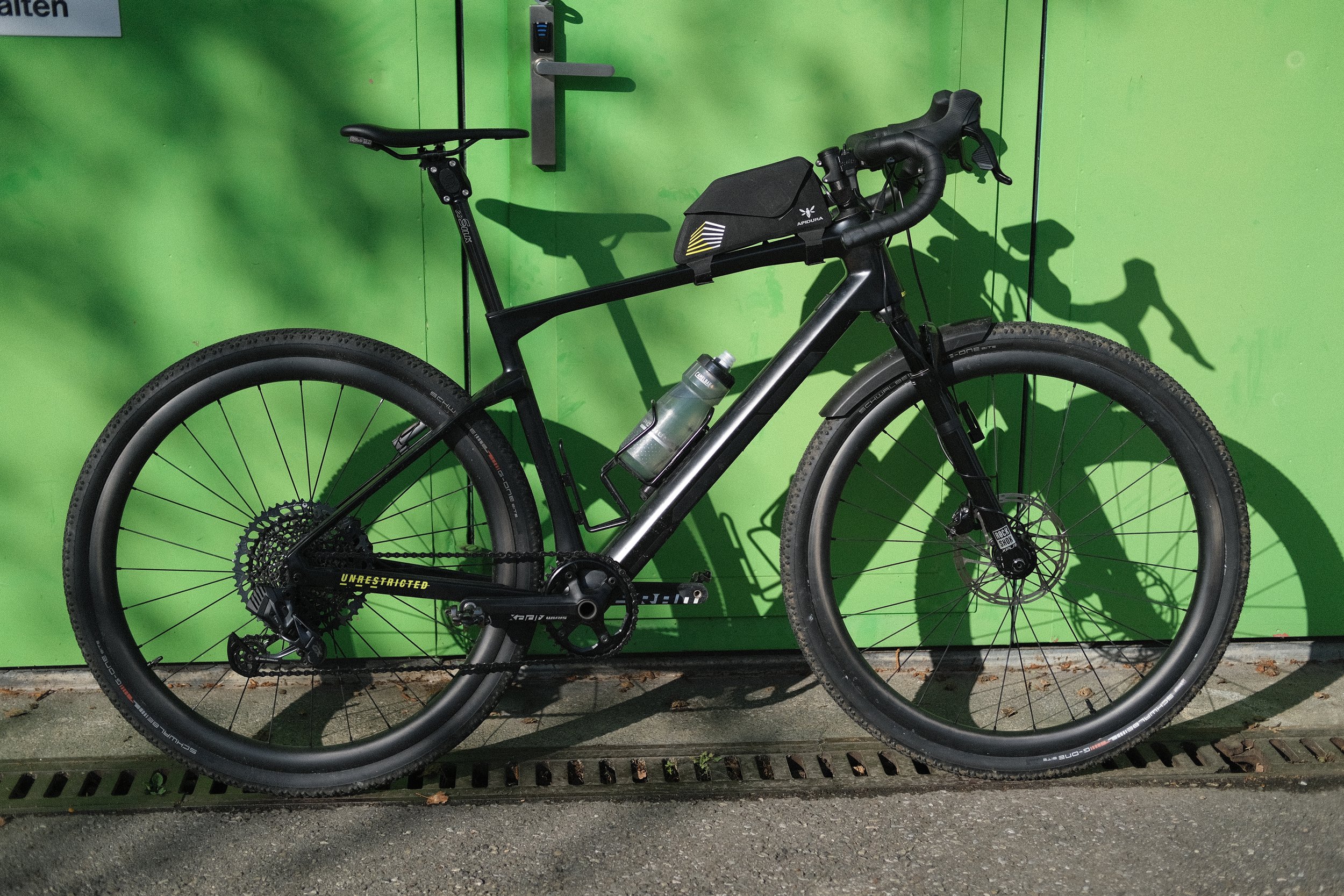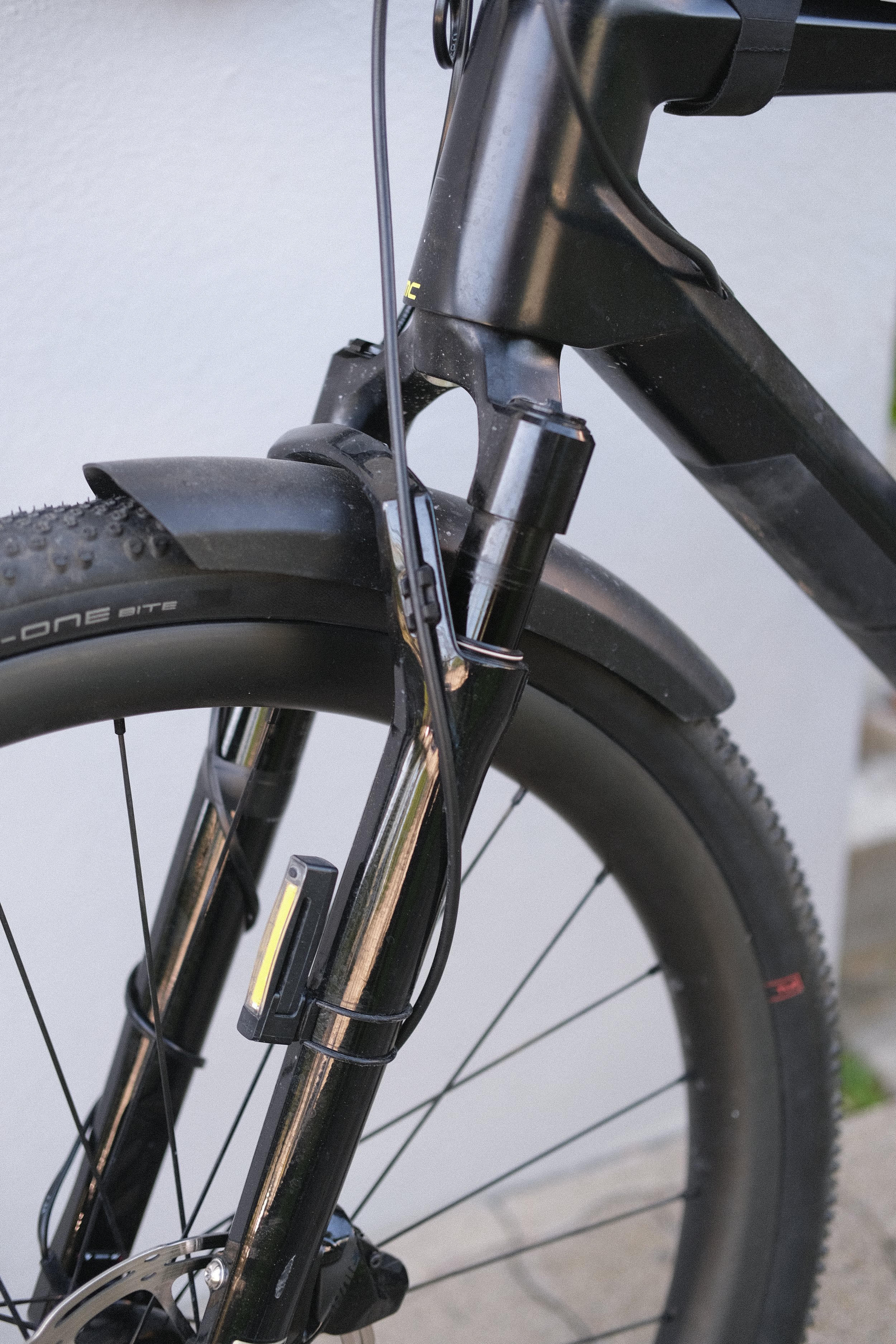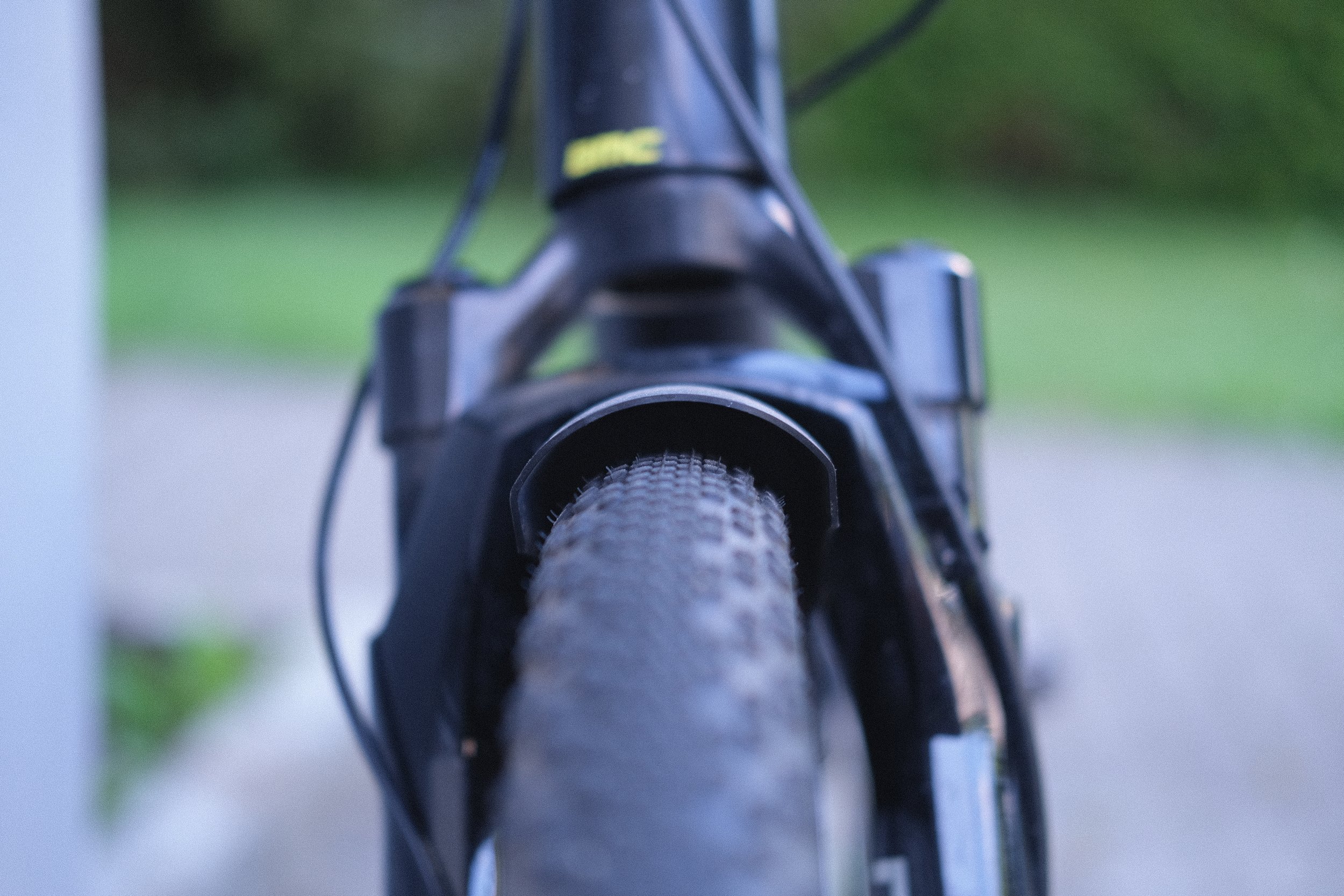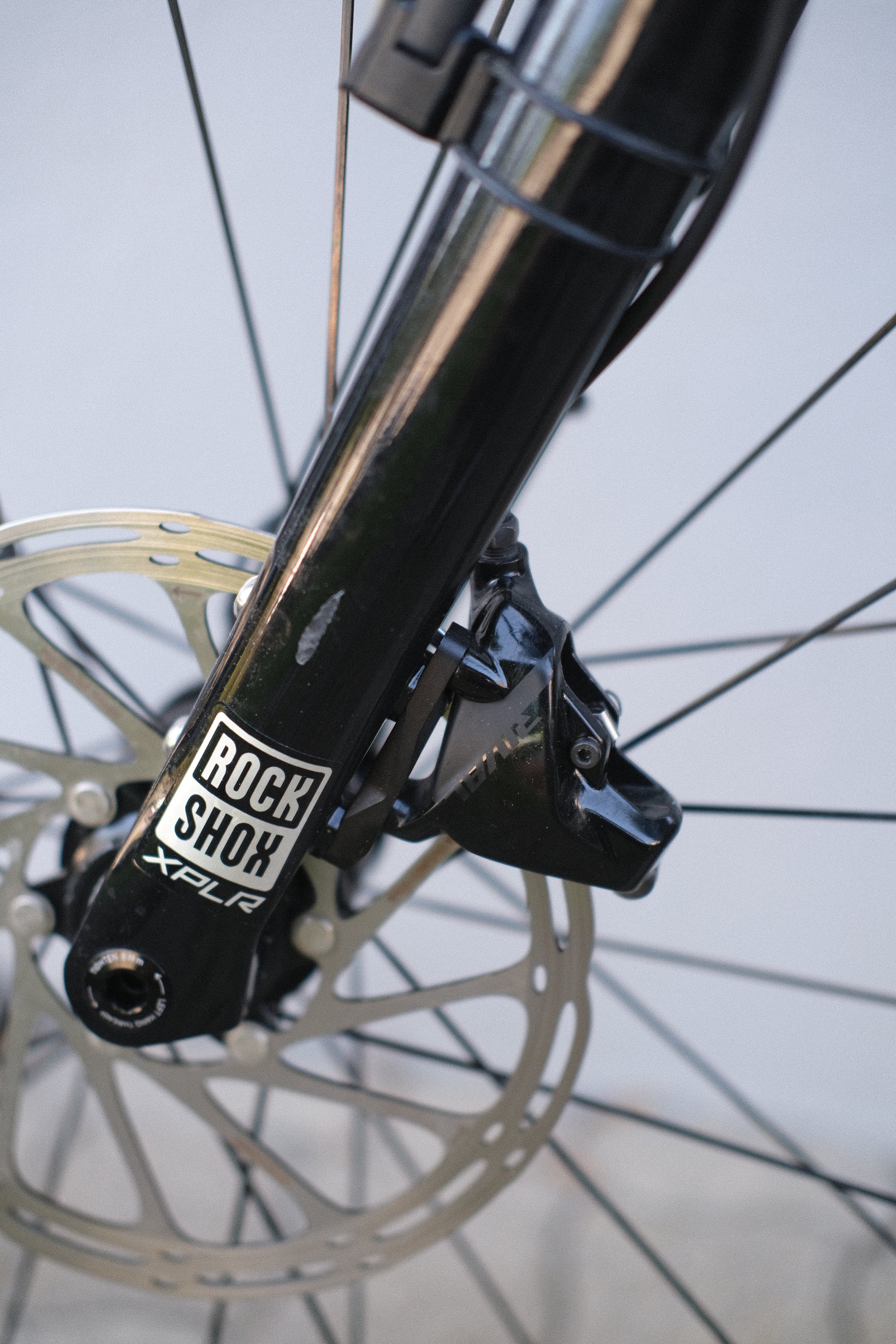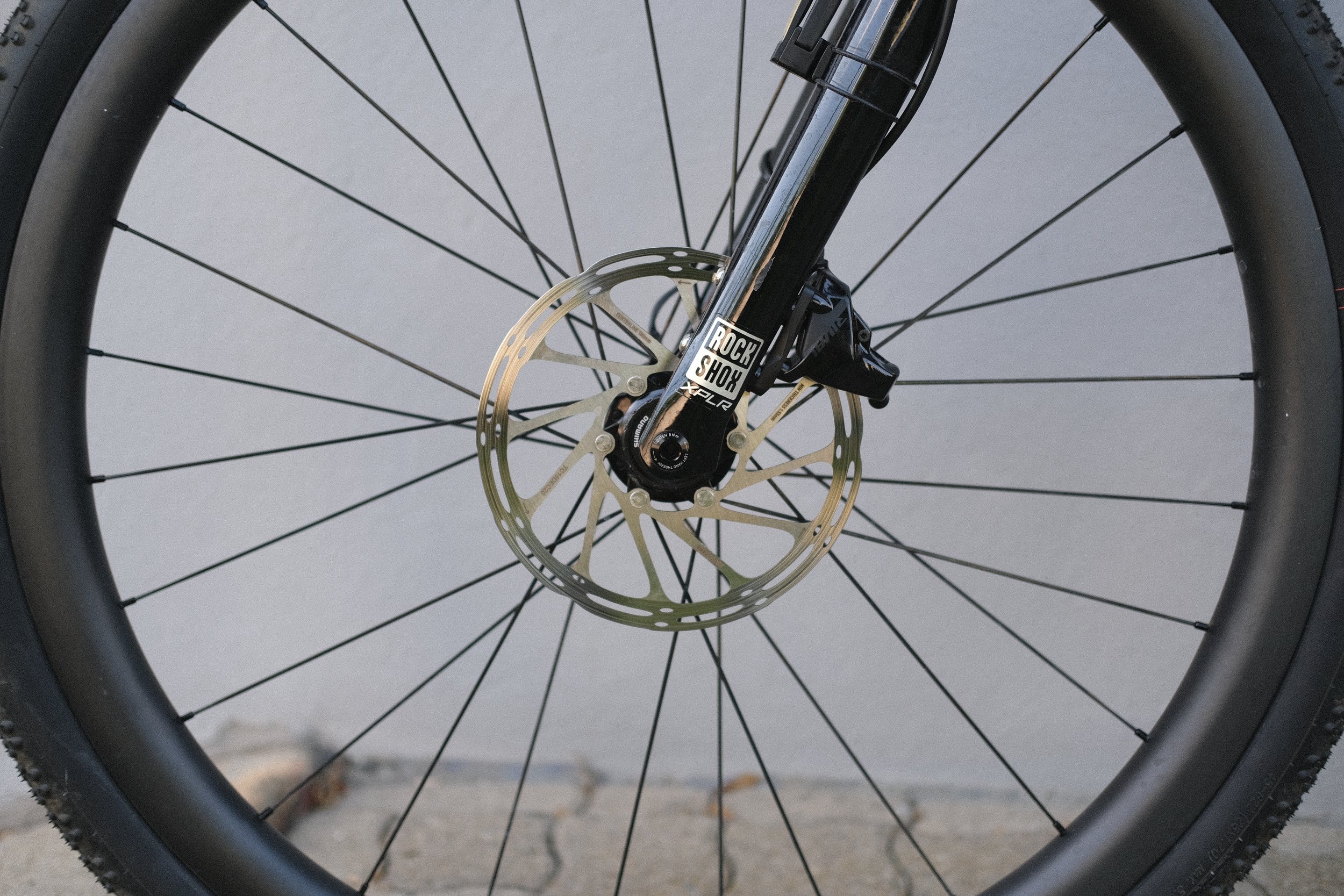ROCKSHOX RUDY ULTIMATE XPLR Review
This review on the blog is about the polarizing Rockshox suspension fork, specifically designed for use on gravel bikes. First, let's briefly look at the specifications of the fork.
As always, please note that English is not my native language. There may be some grammatical errors here and there. Please excuse this, as I am working to improve my skills.
Technical specifications:
Price: €550 (as of May 9, 2022, on r2-bike.de)
Weight: 1298g (including 12 x 100 mm Maxle thru-axle, uncut steerer tube)
Travel: 30mm or 40mm
Geometry: Available in 45mm or 51mm offset, tapered 1.5" to 1 1/8" steerer tube (28.6mm to 40mm), axle-to-crown height (A-C) is 425mm (30mm travel) or 435mm (40mm travel), maximum allowable rotor size is 180mm, tire clearance of 50mm with 700c wheels.
Rockshox Rudy Ultimate XPLR 40mm
The suspension fork blends seamlessly with the design of the BMC URS and doesn't stand out too prominently.
At the end of 2021, Rockshox introduced a suspension fork specifically designed for gravel bikes, following in the footsteps of Fox. Opinions on whether one needs such a fork on their bike vary greatly. For some, a gravel bike with a suspension fork is akin to a heavy XC mountain bike, while for others, it represents a logical progression. In this post, I would like to delve deeper into this discussion and focus solely on "the Rudy" and how it performs.
I ordered and had this fork installed right after its release. The concept of suspension on a gravel bike intrigued me greatly. I often experienced discomfort in my hands and neck, so I was grateful for any added comfort. To get ahead of things, I should mention that these discomforts were mainly due to the bike's setup rather than the absence of a suspension fork.
I had the installation done at a workshop to ensure no mistakes were made with the headset. Installing it on my BMC URS was relatively straightforward since this bike was already designed to accommodate a suspension fork (originally for the Fox 32 SX AX fork). The package included a fitting spacer for the fork, allowing it to sit flush like the original fork. As the URS is also compatible with 180mm brake rotors, I could use them with the Rudy fork as well. The necessary screws for this were included as accessories with the Rudy fork.
Since the brake lines run inside the original fork, the braking system (if you're using hydraulic brakes) needs to be bled.
POSITIVES
One major advantage of this fork is the ability to adjust it completely to your body weight and the terrain you primarily ride on. This can be done through adjusting the air pressure in the air chamber and fine-tuning the rebound settings. Consequently, the fork can be used by anyone, unlike other suspension systems that are often optimized for specific weight ranges or groups (e.g., Lauf fork).
The fork also features a lockout function that actually works. When engaged, the fork compresses only about 5mm and feels like a regular rigid fork. Although the lockout lever is not positioned in the most ergonomic way, it's not uncomfortable either. I believe we will see an updated version in the future that integrates with the SRAM eTap/Axs (Rockshox is part of SRAM) universe, allowing for wireless lockout control.
The lockout is easily accessible once you get accustomed to its position.
Another advantage is the actual functionality of the fork. It noticeably improves traction on loose forest, meadow, and gravel paths. The tire's bouncing on uneven terrain is virtually eliminated (when properly adjusted). The result? A significant gain in speed. During my first test ride on a familiar route through the woods, I didn't feel much faster, but a glance at my Wahoo or later on Strava confirmed the opposite. I effortlessly surpassed my previous times on segments by 3-5 km/h. I believe this is due to the increased grip. The front comfort has also improved significantly, although it fell slightly below expectations. The Redshift Suspension Stem (which will be reviewed separately) provides a similar level of comfort with "only" 20mm of travel, but without the added traction benefits since it only suspends the rider.
The included front fender is truly stylish and does an excellent job. Once you have it, you won't want to part with it.
The included fender provides excellent protection against splashing water and offers enough clearance for 50c tires.
NEUTRAL
One aspect to consider is the change in geometry. Retrofitting this fork naturally alters the geometry of the bike to some extent. However, this point should already be taken into account in future bikes that come equipped with a suspension fork from the factory. The original fork has a length of 407mm (A-C), which is 28mm shorter than the Rockshox Rudy fork. This results in a slight increase in cockpit height. For me, this was positive as it allowed me to relax my riding position. If someone doesn't like this change, they can reduce the spacer length by 10-20mm to achieve a geometry similar to the original setup. Bikes like the Grizl from Canyon, to my knowledge, are already adapted to this specific geometry. However, the riding characteristics are not significantly altered. In my case, the URS, which already feels a bit wobbly, becomes slightly more unstable at low speeds. But one quickly gets used to it.
NEGATIVE
The weight is clearly a downside. The original fork weighs approximately 800g less. This noticeable difference in the front end affects the bike in terms of carrying it through hallways, acceleration, and handling. Regarding the latter, it means that you have to lift the front end a bit more when hopping over small roots in the woods.
Furthermore, a suspension fork is not a maintenance-free product and should undergo servicing 1-2 times per year. This incurs additional costs for the consumer.
In general, the price is also a disadvantage. The MSRP is €919 (according to SRAM), but the fork is available in stores (as of May 9, 2022) for €550. While this already represents a significant reduction, it is still a substantial amount of money.
I find it puzzling why there are two versions of this fork. I believe there will hardly be a noticeable difference between the 30mm and 40mm travel options, and I don't see any compelling reasons to choose the 30mm version, as it doesn't offer a significant weight reduction or cost advantage. The versions only differ in their 10mm axle-to-crown height.
CONCLUSION
The Rockshox Rudy Ultimate XPLR suspension fork delivers on its promises and significantly improves traction and comfort compared to a rigid carbon fork. However, it requires regular maintenance. In my opinion, the area of application for this fork is not entirely suitable or rather overkill for use in Germany/Switzerland. Especially considering the current price, it is only suitable for people who spend a significant amount of time in areas where traction is crucial or who want to maximize the comfort of their gravel bike. Those solely seeking comfort gains should consider the Redshift Suspension Stem instead.




